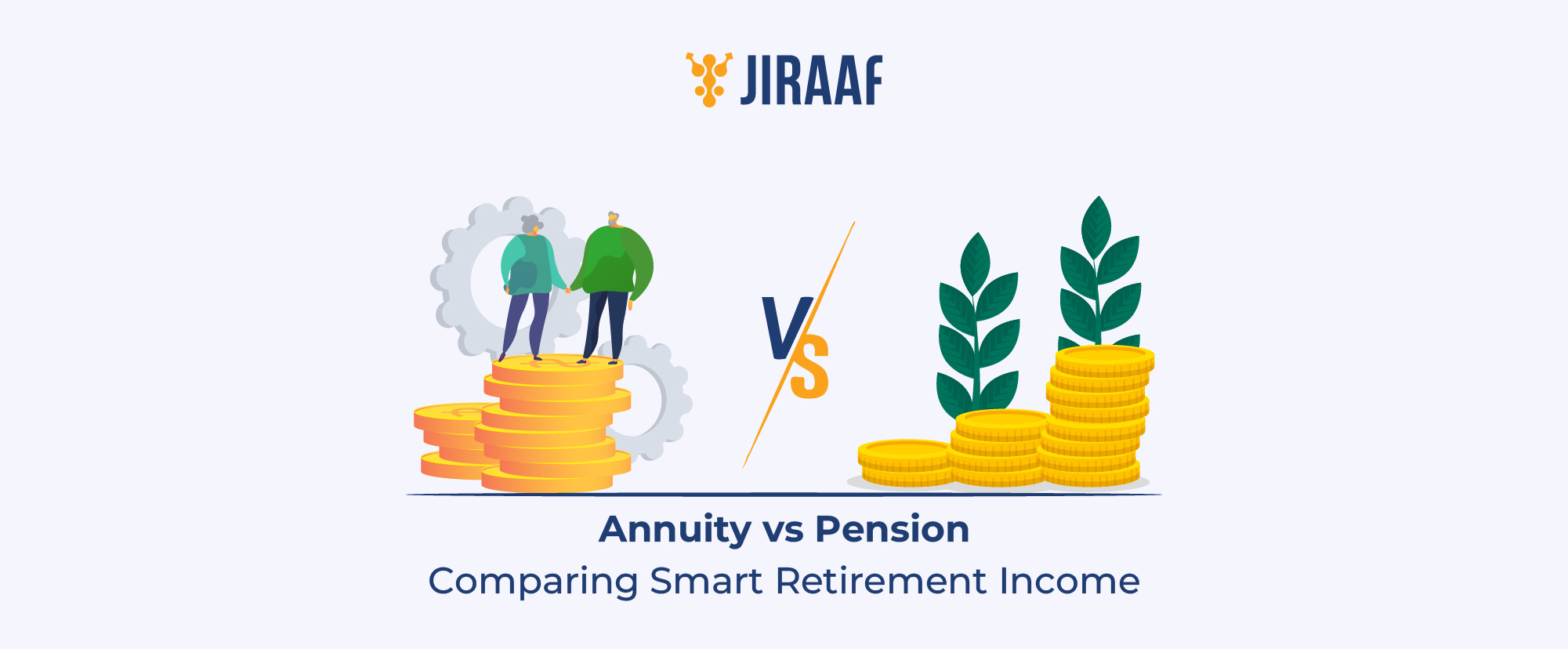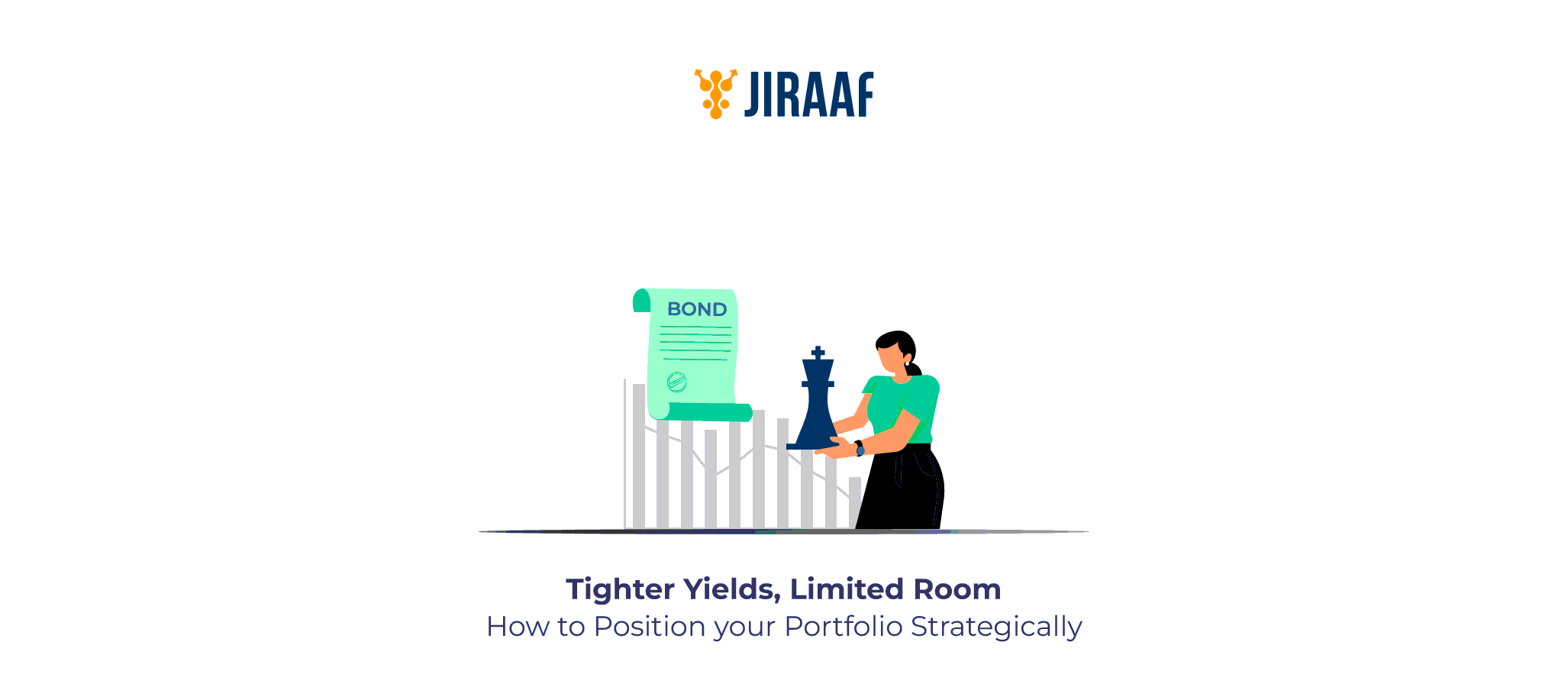Many people assume that annuity and pension mean the same thing—a regular stream of income after retirement, and while both aim to provide financial security, they operate in very different ways and are built on distinct structures. One is tied to your contributions over time, while the other is a product you can purchase to secure income.
If you’ve ever wondered how they really differ and which one could work better for your retirement goals, this blog will break it down in simple terms and help you make an informed choice.
What is an Annuity?
When retirement comes, one big question many salaried individuals face is: How can I ensure I have a steady income even after my salary stops? This is where an annuity can help. You enter into an agreement with an insurance company, investing either a lump sum or periodic payments. In return, the insurer guarantees regular payouts for a fixed period or for life.
The real trade-off in annuities lies between certainty and flexibility. They’re designed to provide you with a steady income no matter how the market performs. While inflation or volatility may affect other investments, annuities promise consistency, offering peace of mind and stability. But that security comes at a cost: once you invest, your money stays locked in, limiting your ability to make early withdrawals or changes.
To understand this balance better, let’s look at the essentials of annuities:
- Guaranteed income structure: The insurer commits to paying a fixed amount at regular intervals, ensuring steady cash flow after retirement.
- Flexible payout start date: You can decide when the income begins — either right after purchase or after a chosen deferment period.
- Joint-life option: Some plans extend coverage to your spouse, so the payouts continue even after your lifetime.
- Locked-in investment: Once invested, the funds cannot be easily withdrawn, which builds long-term discipline but reduces liquidity.
While an annuity builds a safety net from personal savings, a pension plan often serves as a reward for years of dedicated work. Let’s understand how pensions complete the picture of retirement security
What is a Pension?
A pension is a structured income plan supported by contributions from your employer, the government, or sometimes even yourself. Over your working years, these contributions build a corpus, which then provides regular income after retirement. Unlike annuities, where you purchase the plan yourself, pensions are often a recognition of your long-term service and dedication.
In India, pensions do more than just provide money—they offer security, stability, and a sense of independence in retirement. Programs like the National Pension System (NPS) and the Employees’ Pension Scheme (EPS) are designed to help you maintain your lifestyle, even when your active earnings stop.
The trade-off is control versus certainty—pension payouts are generally fixed, so while they offer stability, there’s limited room for customization or early withdrawals.
Here’s what pension plans bring to the table:
- Steady post-retirement income: You receive regular payouts that help manage essential monthly expenses with predictability.
- Contribution-based structure: The retirement fund is built through systematic contributions from you, your employer, or the government.
- Predefined benefits: The payout amount and terms are usually determined by service period and contribution level, offering clarity but little flexibility.
- Automatic saving mechanism: Contributions deducted throughout your working life encourage consistent savings and financial discipline.
Having understood what annuities and pensions are, the next step is to see why they exist and what they are meant to achieve. Knowing their purpose helps clarify which option aligns better with your retirement goals and financial needs.
Objectives of Annuity and Pension
Now that we’ve understood how annuities and pensions function, the next step is to see why they exist. Each serves a distinct purpose in ensuring post-retirement stability, and understanding this intent helps you decide which one better aligns with your financial goals.
The objective of an annuity is to:
- Provide stability and a steady stream of income after retirement.
- Offer pension-like retirement benefits for individuals without employer-backed plans.
- Shield the policyholder from market uncertainties through guaranteed payouts.
- Encourage long-term financial discipline by converting savings into predictable returns.
- Give peace of mind with reliable income once active earnings stop.
The objective of a pension is to:
- Provide financial support after retirement through contributions from employers, employees, or the government.
- Recognize years of service by ensuring continued income in the non-working phase.
- Promote disciplined savings during working years, gradually building a retirement corpus.
- Deliver emotional and financial reassurance through predictable, steady payouts.
- Complement annuities for those seeking both guaranteed income and some degree of personal control over retirement funds.
Now that we know what annuities and pensions are designed to do, let’s explore the advantages they bring, as understanding these benefits will help you see which option truly fits your goals.
Benefits of Annuity & Pension
Both annuities and pensions aim to provide financial security after retirement. Here’s a clear look at the practical benefits each offers.
Benefits of Annuity
- A steady income stream, providing post-retirement financial security.
- Safeguards against market turbulence, and guarantees steady dividends in whatever economic climate.
- Encourages careful financial planning by converting one-time savings into a steady income.
- A customizable range of payout choices to meet individual needs, including lifetime or fixed-term income.
- Ensures a steady financial cushion by lowering the chance of outliving your savings.
Benefits of Pension
- Assures a steady income following years of service, backed by government, employee, or employer contributions.
- Encourages financial freedom and stability in retirement.
- Encourages a career-long commitment to long-term savings.
- Comes with predetermined terms, which makes planning simple and predictable.
- Can be used to supplement annuities for a well-rounded strategy that combines some degree of personal control with guaranteed income.
These advantages demonstrate the worth of annuities and pensions, but it’s also critical to recognize their drawbacks. Let’s look at the difficulties and possible downsides of each.
Drawbacks of Annuity & Pension
While annuities and pensions offer security, they are not without limitations. Understanding these drawbacks helps in making a balanced retirement plan.
Cons of Annuity
- Flexibility is limited. Once the investment is made, altering terms or withdrawing funds can be difficult.
- Fixed payouts may lose value over time if inflation rises, potentially reducing purchasing power.
- The growth potential is modest. While returns are steady, they often lag behind market-linked investments.
- Some products can be complex, with fees or riders that may affect overall benefits.
Cons of Pension
- Most pensions come with predefined terms, giving little room for personal adjustments.
- Dependence on the employer or government means policy changes can affect future income.
- Portability can be an issue. Certain schemes are tied to specific employers or regions, making transfers cumbersome.
- Fixed payouts may sometimes fall short if living costs rise faster than anticipated, requiring additional planning.
With both the advantages and limitations in mind, it becomes easier to see how annuities and pensions differ in structure, control, and suitability, which leads us naturally to a detailed comparison.
Key Differences Between Annuity & Pension
Both annuities and pensions aim to provide financial stability after retirement, but they differ in structure, source, and flexibility. The table below highlights these differences clearly:
| Feature | Annuity | Pension |
| Source of Funding | Lump-sum investment with an insurance company | Contributions from employer, employee, government, or a combination of two of these |
| Inflation Protection | Usually fixed, may not adjust | Often fixed; inflation protection depends on scheme |
| Purpose | Convert savings into predictable income | Provide post-retirement financial security and recognition |
| Control | Investor chooses options at outset | Terms largely set by employer/government |
Knowing the key differences between annuities and pensions makes it easier to plan ahead, and with a few practical strategies, you can optimize your retirement income while ensuring financial security.
Tips for Retirement Planning in India
Retirement may seem far away, but it’s something you should start preparing for while you’re still earning. The habits and financial choices you build today will shape how secure and comfortable your later years feel. Instead of waiting for the “right time,” begin with small, consistent steps that strengthen your financial base.
Here are a few practical tips to help you plan better and make the most of your annuities, pensions, and other retirement savings options:
- Start early; even small amounts count: Compounding works best when given time. Even modest contributions can grow significantly over the years.
- Diversify your retirement portfolio: Combine annuities, pensions, and other savings instruments to balance safety and growth.
- Review contributions regularly: Life changes, and so should your retirement plan. Increase contributions when possible or adjust based on evolving needs.
- Consider inflation protection: Include options like inflation-linked annuities or inflation-indexed funds to safeguard your purchasing power.
- Match employer contributions: If your company offers a pension scheme, ensure you maximize matching contributions for extra growth.
- Plan for healthcare and emergencies: Set aside funds or insurance to cover unexpected medical costs, preventing disruption to retirement income.
- Stay informed about tax benefits: Utilize exemptions and deductions under schemes like NPS or tax-saving annuities to increase net returns.
Conclusion
Retirement doesn’t mark the end of your income—it marks the moment your planning starts paying you back. A pension is the system’s way of thanking you for your service, while an annuity is your own way of thanking yourself for thinking ahead. Together, they make sure that life after work remains as steady as the years you spent building it.
FAQs About Annuity vs. Pension
Annuities and pensions serve similar goals but follow different structures, funding sources, and payout patterns. Understanding these distinctions helps in choosing the option that fits your retirement needs and lifestyle preferences.
The “better” choice is dependent upon individual priorities. While some people favor employer-backed security, others might choose flexibility and guaranteed income. The decision can be successfully guided by assessing objectives, risk tolerance, and budgetary requirements.
Annuities and pension plans can be combined to provide stability and individual control in a well-rounded strategy. In order to pay for necessities while maintaining some financial flexibility, many retirees investigate this combination.
Depending on the structure and provider, safety can vary. Pensions frequently include support from the government or employers, whereas annuities give fixed payouts from insurance. Which one best suits your comfort level can be determined by comparing terms, guarantees, and stability.
Tax implications differ for annuities and pensions based on the scheme and contributions. Being aware of potential tax liabilities helps in planning withdrawals and maximizing post-retirement income efficiently.









